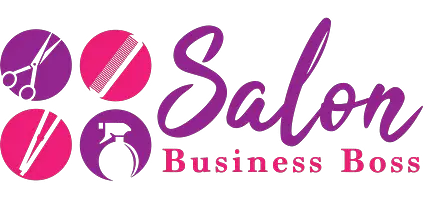Salons, whether small independent businesses or large chains, incur various monthly expenses to maintain their operations and provide quality services to their customers.
Salon monthly expenses range from $50 to $1,000, depending on size and services. Small salons spend on rent, supplies, and basic wages, while larger chains invest in high-end equipment, branding, and multi-location expenses.
I. Small Independent Salon: $50 – $200
1. Rent and Utilities:
The rent for the salon space stands as one of the most substantial expenses for a small independent salon. The cost can vary significantly depending on factors like the salon’s location, size, and surrounding amenities. Alongside rent, utility bills also contribute to the salon’s overhead costs. These encompass electricity, water, and gas expenses. Being essential services for daily operations, utilities directly impact the salon’s operational efficiency and comfort for both staff and clients. Striking a balance between a prime location that attracts clientele and manageable rent is crucial for maintaining financial stability.
2. Salon Supplies:
The availability of basic supplies is integral to a salon’s smooth functioning. These supplies encompass a wide range of items, including shampoo, conditioner, hair styling products, towels, and various cleaning materials. Regularly replenishing these essentials incurs a recurring cost, which can vary depending on the volume of services provided and the frequency of client visits. Moreover, ensuring a consistent stock of quality products is vital for providing excellent service and customer satisfaction. Managing the inventory efficiently and finding cost-effective suppliers can help control expenses in this area.
3. Salon Equipment Maintenance:
Regular maintenance and repair of salon equipment are imperative to uphold service quality and customer experience. Equipment such as hairdryers, styling chairs, and other styling tools require periodic servicing to avoid breakdowns and operational hiccups. Neglecting maintenance can lead to costly repairs or replacements, impacting the salon’s bottom line. A proactive approach to equipment care ensures longevity and reliable performance. Allocating a portion of the budget to equipment maintenance is an investment in the salon’s continued success and client retention.
4. Marketing and Advertising:

In a competitive market, effective marketing strategies are vital for attracting new clients and promoting the salon’s services. Investments in marketing efforts, such as distributing flyers, running social media promotions, and local advertising campaigns, contribute to monthly expenses. The effectiveness of these strategies can directly impact the number of new clients and repeat business, making marketing a valuable investment. Measuring the return on investment (ROI) of different marketing channels can help refine the salon’s marketing approach and optimize expenditure in this area.
Read more about: Unlocking Potential: Hair and Beauty Salon Insights
5. Staff Wages:
Employee wages constitute a significant portion of a salon’s monthly expenses, particularly for small teams. Attracting and retaining skilled staff necessitates offering competitive wages commensurate with industry standards. Ensuring fair compensation for the salon’s workforce is essential for fostering a motivated and dedicated team. Moreover, employee satisfaction positively impacts customer interactions, contributing to client loyalty and increased revenue. Efficiently managing staff scheduling and optimizing working hours can help control wage-related expenses while maintaining a positive work environment.
II. Mid-Sized Salon: $200 – $500
1. Employee Benefits:
As a salon expands, offering employee benefits becomes essential for attracting and retaining skilled staff. Health insurance, paid time off, and retirement plans are valuable incentives that demonstrate the salon’s commitment to its workforce’s well-being and long-term stability. Competitive benefit packages can help differentiate the salon from competitors, making it an attractive employer within the industry. Providing such benefits fosters a sense of loyalty and dedication among employees, leading to improved job satisfaction and decreased turnover rates. Additionally, a happy and healthy workforce translates into better customer service, as satisfied employees are more likely to deliver exceptional salon experiences.
2. Salon Software and POS Systems:
Investing in salon management software and efficient point-of-sale (POS) systems can significantly enhance a salon’s operational efficiency. These technologies streamline various aspects of the salon’s daily operations, including appointment bookings, inventory management, and customer data management. By automating these processes, salon owners and staff can focus more on delivering top-notch services and building customer relationships. The software also facilitates data analysis, enabling salon owners to identify trends, preferences, and opportunities for business growth. A well-implemented POS system simplifies payment processing and inventory tracking, reducing the likelihood of errors and enhancing the overall customer experience.
3. Continuing Education:
To stay ahead in the ever-evolving beauty industry, mid-sized salons prioritize continuing education for their staff. Investing in training programs, workshops, and skill development sessions ensures that the salon’s workforce remains up-to-date with the latest trends, techniques, and product innovations. Continuous learning enables stylists and technicians to offer cutting-edge services to clients, ultimately enhancing the salon’s reputation and attracting new customers. Moreover, fostering a culture of professional growth and improvement promotes staff engagement and dedication, as employees feel valued and empowered to excel in their roles.
4. Expanded Service Offerings:
Mid-sized salons often explore diversifying their services to cater to a broader clientele. Introducing new offerings such as facials, massages, or nail treatments allows the salon to tap into additional revenue streams. However, expanding service offerings requires careful planning and investment in additional supplies, equipment, and training. Market research and customer feedback play crucial roles in determining which services align with the salon’s brand and customer preferences. Offering a well-rounded menu of services can attract a diverse customer base and foster customer loyalty, resulting in increased revenue and business growth.
5. Decor and Ambiance:
Enhancing the salon’s aesthetics and ambiance contributes to creating a memorable and enjoyable customer experience. A well-designed and welcoming environment can leave a lasting impression on clients, encouraging repeat visits and positive word-of-mouth referrals. Salon owners can invest in stylish furnishings, soothing color schemes, and comfortable seating to create a calming atmosphere. Attention to details like lighting, music, and scent can further elevate the ambiance, adding to the salon’s overall appeal. An inviting and visually pleasing space helps clients feel relaxed and pampered during their salon visits, enhancing their satisfaction with the services received.
III. Large Chain Salon: $500 – $1,000
1. Multiple Locations:

Large salon chains with multiple locations incur higher expenses due to the operational costs associated with each branch. Rent expenses significantly increase as the chain expands, with prime locations in different areas requiring substantial financial commitments. Additionally, utility bills rise, including electricity, water, and other utilities needed to support the increased salon spaces. Staffing expenses also escalate as the number of employees grows to meet the demands of multiple locations. Coordinating and managing staff across different branches may require additional resources, further impacting monthly expenses. However, the expansion to multiple locations allows the salon chain to reach a broader customer base, potentially leading to increased revenue and market presence.
Read more about: What Is A Kiddies Salon Business and How to Start One
2. High-End Equipment and Product Lines:
To cater to an upscale clientele, large salon chains invest in high-quality salon equipment and premium product lines. Top-notch hair styling tools, state-of-the-art spa equipment, and luxurious amenities contribute to an elevated customer experience. While the initial investment in high-end equipment may be significant, it aligns with the salon’s branding and reputation for delivering top-quality services. Similarly, offering exclusive and high-end product lines complements the salon’s image and attracts clients seeking sophisticated and exclusive beauty solutions. The expense associated with premium equipment and product lines is justified by the potential for increased customer satisfaction and loyalty, leading to higher profitability in the long run.
3. Staff Training and Development:
Emphasizing staff training and development programs is crucial for large salon chains to maintain consistent service quality across all their branches. These programs focus on refining the skills and expertise of the salon’s workforce, ensuring that all staff members adhere to the same service standards and brand values. Regular training workshops, seminars, and skill enhancement sessions keep the staff up-to-date with the latest trends and techniques in the beauty industry. While investing in staff development incurs ongoing expenses, it results in a skilled and motivated workforce that can deliver excellent customer service, fostering customer loyalty and positive word-of-mouth referrals.
4. Branding and Advertising:
Establishing and maintaining a strong brand presence is a priority for large salon chains. Nationwide advertising campaigns and targeted marketing initiatives contribute to the overall monthly expenses. High-quality branding materials, such as signage, promotional materials, and online advertisements, help build brand recognition and attract potential customers. Additionally, investing in digital marketing strategies like social media promotions and influencer collaborations enhances the salon’s online visibility and engagement with the target audience. While branding and advertising expenses can be substantial, they play a crucial role in positioning the salon chain as a reputable and trusted brand in the competitive beauty industry.
5. Customer Loyalty Programs:
Implementing customer loyalty programs is a strategic investment to enhance customer retention for large salon chains. These programs offer rewards, discounts, or exclusive perks to frequent customers, encouraging them to return to the salon for future services. While loyalty programs incur ongoing costs, the benefits include increased customer loyalty, higher customer lifetime value, and positive reviews and referrals from satisfied clients. By fostering a sense of appreciation and building strong relationships with customers, loyalty programs contribute to the salon chain’s overall success and long-term profitability.
Conclusion
The monthly expenses of a salon can vary significantly depending on the salon’s size, location, services offered, and business strategy. Small independent salons may have expenses ranging from $50 to $200, mid-sized salons from $200 to $500, and large chain salons from $500 to $1,000 or more. Understanding the breakdown of these expenses is crucial for salon owners to manage their finances effectively and provide exceptional services to their customers while maintaining profitability. It is essential for salon owners to continuously evaluate their expenses and optimize their operations to thrive in a competitive market.
Frequently Asked Questions

1. Is it necessary for a small salon to offer employee benefits?
While small salons may not offer extensive benefits, providing some incentives like flexible schedules or commission-based earnings can help attract and retain skilled staff.
2. Do salon monthly expenses vary based on location?
Yes, salon monthly expenses can differ significantly based on the location, with expenses generally higher in prime urban areas compared to suburban or rural locations.
3. How can a salon maintain competitive pricing while managing expenses?
Salon owners can maintain competitive pricing by analyzing local market rates, optimizing operational efficiency, and offering bundled services or loyalty programs to retain customers.
To learn more on how to start you own salon checkout my startup documents here.
Please note that the contents of this blog are for informational and entertainment purposes only and should not be construed as legal advice. Any action taken based on the information provided in this blog is solely at your own risk. Additionally, all images used in this blog are generated under the CC0 license of Creative Commons, which means they are free to use for any purpose without attribution.

About the author. Entrepreneur and Salon Business Fan.
Hi! I am Shawn and I am a happy individual who happens to be an entrepreneur. I have owned several types of businesses in my life from a coffee shop to an import and export business to an online review business plus a few more and now I create online salon business resources for those interested in starting new ventures. It’s demanding work but I love it. I do it for those passionate about their business and their goals. That’s why when I meet a salon business owner, I see myself. I know how hard the struggle is to retain clients, find good employees and keep the business growing all while trying to stay competitive.
That’s why I created Salon Business Boss: I want to help salon business owners like you build a thriving business that brings you endless joy and supports your ideal lifestyle.

